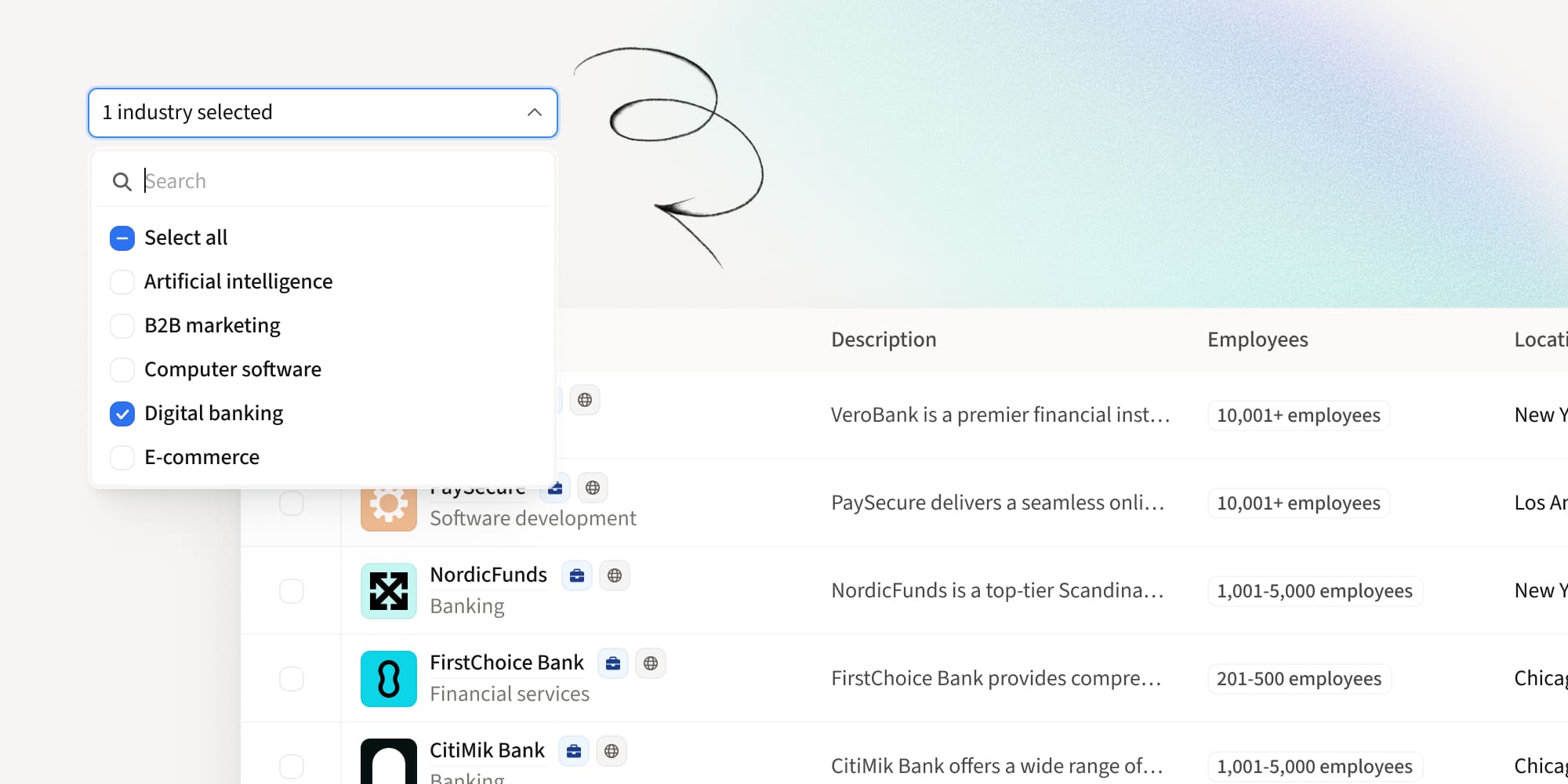10 sales voicemail scripts for cold outbound sales teams
•
September 6, 2024

Discover the tools, steps, and best practices for creating realistic AI voice clones to boost your sales and outreach!
Voicemail might seem old-fashioned tool, but don’t underestimate its power.
Sometimes it’s actually refreshing for prospects to hear the voice of the personal selling to them, especially if they’re bombarded with cold emails on a daily basis.
A solid voicemail strategy can set you apart from the competition and help drive those all-important callbacks. In this blog, we’ll cover some general voicemails dos and don’ts, plus some basic scripts to make sure you’re covering all bases.
Introduction to sales voicemail
What is a sales voicemail script?
A sales voicemail script is a pre-written message designed to be left on a prospect’s voicemail when you can’t reach them directly. A typical script will include a concise introduction, an explanation of your value proposition, and a prompt for the prospect to return your call. Think of it as a quick, compelling pitch delivered in a recorded format.
The importance of voicemail in cold outbound sales
Many sellers put a lot of thought and preparation into their cold call game but fail to follow it up with a sound voicemail strategy. But there’s actually an advantage to voicemails: prospects are more likely to listen to them at a time that suits them, whereas with cold calling you always run the risk of catching them in the middle of something else.
Crafting an effective business voicemail script is essential for making a strong first impression and increasing your chances of a callback.
As with cold calling, however, it’s important not to become too reliant on your scripts. Get used to communicating concisely and expressively so you don’t sound robotic. The more personal and relevant you can be to your prospect, the more likely you are to win that call-back.
Key elements of an effective sales voicemail script
Here are some basic things to include in your voicemail messages. Remember to be as brief and to-the-point as possible:
1. Introduce yourself and your company
Start with a friendly greeting and a brief introduction. You can mention your name, your company, and your role to set the stage for the rest of your message.
2. Explain the purpose of your call
Be upfront about why you’re calling. Whether it’s to discuss a potential opportunity, follow up on an inquiry, or introduce a new product, make sure the purpose of your call is clear. Even if the prospect isn’t interested, they’ll appreciate you getting to the point quickly.
3. Highlight the benefits of a engaging with you
Let the prospect know what’s in it for them. Mention how your product or service could solve a problem or provide value, why it’s worth their time to return your call, and why now is the time to act.
4. Guide the prospect to the next steps
Clearly state what you want them to do next. Whether it’s calling you back, scheduling a meeting, or visiting a website, make your call to action specific and actionable. You might also mention how you’re planning to follow up, such as calling back at a specific time, sending them an email, or ask them an open-ended question to encourage them to reply.
5. State your phone number clearly
If you’re inviting a call-back, it’s best to repeat your phone number at least twice, even if you think they already have access to it. It’s professional and makes it absolutely clear what you want them to do.
A well-prepared business voicemail script should include a clear introduction, a concise value proposition, and a compelling call to action.
Best practices for crafting and using sales voicemail scripts
Get to the point
Keep your message concise and direct. Prospects are more likely to listen to and respond to a voicemail that gets straight to the purpose without unnecessary details. Try to avoid repeating yourself and make sure your message flows logically from introduction to value proposition to call-to-action (CTAs).
Research and personalize your message
Tailor your voicemail script to each prospect. Mention something specific about their company or industry to show you’ve done your homework and aren’t just leaving a generic message. Remember to call the prospect by their name!
Master your tone and delivery
Keep a steady and confident tone
Speak clearly and confidently, and watch your pace. A steady tone conveys professionalism, helps build trust with the prospect, and gives them space to follow what you’re saying.
Vary your cadence for emphasis
Adjust your speed and inflection to emphasize key points. This makes your message more engaging and easier to follow, and will help nurture the human connection with your potential buyer.
A/B testing and refining your sales voicemail scripts
Test different versions of your general voicemail script to see which one performs best!
Pay attention to which CTAs, questions, and value pitches get the most callbacks and see if you can use these insights to refine your approaches for each of your buyer personas.
To further enhance the personalization of your voicemails, consider integrating AI voice cloning technology, which allows for creating unique, lifelike messages
10 sales voicemail scripts for cold outbound teams
1. The direct introduction voicemail script
“Hi [Prospect Name], this is [Your Name] from [Your Company]. I wanted to introduce myself and see if we might be able to help with [specific challenge or opportunity]. Please give me a call back at [Your Phone Number]. Looking forward to connecting!”
2. The Value Proposition Script
“Hello [Prospect Name], it’s [Your Name] with [Your Company]. I was wondering - how are you currently tackling [pain point] over at [Prospect Company]? I’ve been looking into how we might help with [specific need or goal] and thought you’d be interested in hearing how we’ve helped companies like yours [achieve example success metric]. Call me back at [Your Phone Number] to discuss how we can help.”'
3. The urgency-inducing script
“Hi [Prospect Name], this is [Your Name] from [Your Company]. I’m reaching out because we actually have an offer on our [solution] and I thought it might be of interest to your team at [Prospect Company]. Just bear in mind that this offer is only available for [time-frame]/ Please call me back at [Your Phone Number] today. It’ll be a quick but fruitful conversation!”
4. The trust-building script
“Hello [Prospect Name], it’s [Your Name] from [Your Company]. I don’t know if you remember, but we spoke briefly [or “I met you at [event]”]1 I’d love to continue our conversation about [topic] and explore how we can work together. Reach me at [Your Phone Number]. Thanks!”
5. The follow-up script for old leads
“Hi [Prospect Name], it’s [Your Name] from [Your Company]. We spoke a while ago about [previous topic] and [Prospect Company]’s situation regarding [pain points]. Just checking in to see if you’re still interested in [solving specific pains] or if your needs have changed. If you want to drop me an update I’d love to hear from you on [Your Phone Number]”.
6. The referral-based voicemail script
“Hello [Prospect Name], this is [Your Name] with [Your Company]. [Referral’s Name] suggested I reach out to you. We’ve helped them with [specific benefit], and they think we could do the same for you. I was going to shoot you an email with a little more information, but feel free to give me a call-back on [Your Phone Number] if you want to chat!”
7. The gatekeeper message script
“Hi [Prospect Name], this is [Your Name] from [Your Company]. I was hoping to discuss [specific topic] with you, especially since [explain why now is a good time]. Please let me know when you might be available. You can drop me an email at [Your Email Address] or you can reach me directly at [Your Phone Number]. Look forward to hearing from you!”
8. The re-engagement script
“Hello [Prospect Name], it’s [Your Name] from [Your Company]. Hope you’re doing well! It’s been a while since we [explain previous interaction] but I wanted to touch base to see if there’s a new opportunity to collaborate! I actually have some ideas around [topic]. Call me back at [Your Phone Number] to catch up.”
9. The warm-up voicemail script
“Hi [Prospect Name], this is [Your Name] from [Your Company]. I’m reaching out because I saw [mention a recent achievement or news related to them]. Congratulations! I was wondering about what’s next for [Prospect Company] and thought you’d be interested in how we recently helped [Customer 1] [achieve example success]. Call me at [Your Phone Number]!”
10. The final attempt script
“Hello [Prospect Name], it’s [Your Name] from [Your Company]. I’ve tried reaching out a few times and really think there’s a great opportunity for us to work together. This will be my final call, so if you’re interested, I’d love to hear from you at [Your Phone Number]. I’ll also shoot you a quick email so you have my details for reference. Thank you!”
Voicemail scripts for cold outbound success
The whole objective of outbound is to get prospect responses–so why give up if your prospect isn’t available to take a call right now?
Voicemail is unfairly dismissed as old-fashioned and obsolete, but it’s a great way to stand out against your competitors and demonstrate to prospects that you’ve gone the extra mile. The more you practice, and the more voicemails you leave, the more natural it will feel and the more confident you will become in pitching to individuals.
In addition to traditional voicemail, LinkedIn voice messaging offers another powerful tool for engaging prospects who prefer a more modern approach.
Remember, a voicemail is just another opportunity to make a memorable first impression—so make it count!
FAQs on sales voicemail scripts
What is a sales voicemail script?
A sales voicemail script is a pre-written message left on a prospect’s voicemail. For example, a script will include and introduction, an explanation of the purpose of your call, and an encouragement the recipient to return your call or engage with you elsewhere. You can and should adapt your script to each prospect to keep your messaging sounding authentic and relevant.
How do you leave a sales voicemail?
You can leave a voicemail for any prospect who has a voicemail inbox activated on their phone line. Keep the message clear and concise, and make sure you call the prospect by their name.
Should you leave a voicemail when cold calling?
Yes, leaving a voicemail can definitely be beneficial when cold calling! It gives you a chance to provide information and stoke the prospect’s interest, even if they’re not available to take your call in real-time. An interesting or compelling voicemail might be enough to prompt them to return your call, and if not, they’re still more likely to remember you when you follow up again.
What are the benefits of a sales voicemail?
Sales voicemails can help you:
- Reach prospects who are not available to take your call.
- Communicate your message and value proposition.
- Create a personal connection, even without a live conversation.
- Increase the likelihood of a callback.
What are the don’ts of sales voicemails?
Try to avoid:
- Being too long or rambling.
- Using overly technical jargon or a too formal tone.
- Neglecting to include your contact information.
- Leaving a message without a clear call to action.
- Sounding disinterested or unenthusiastic.
How long should a sales voicemail be?
A sales voicemail should be concise, ideally between 20 to 30 seconds. Aim to deliver your key points quickly and clearly to respect the prospect’s time and increase the likelihood of them listening to the entire message.
Subscribe to Amplemarket Blog
Sales tips, email resources, marketing content, and more.










